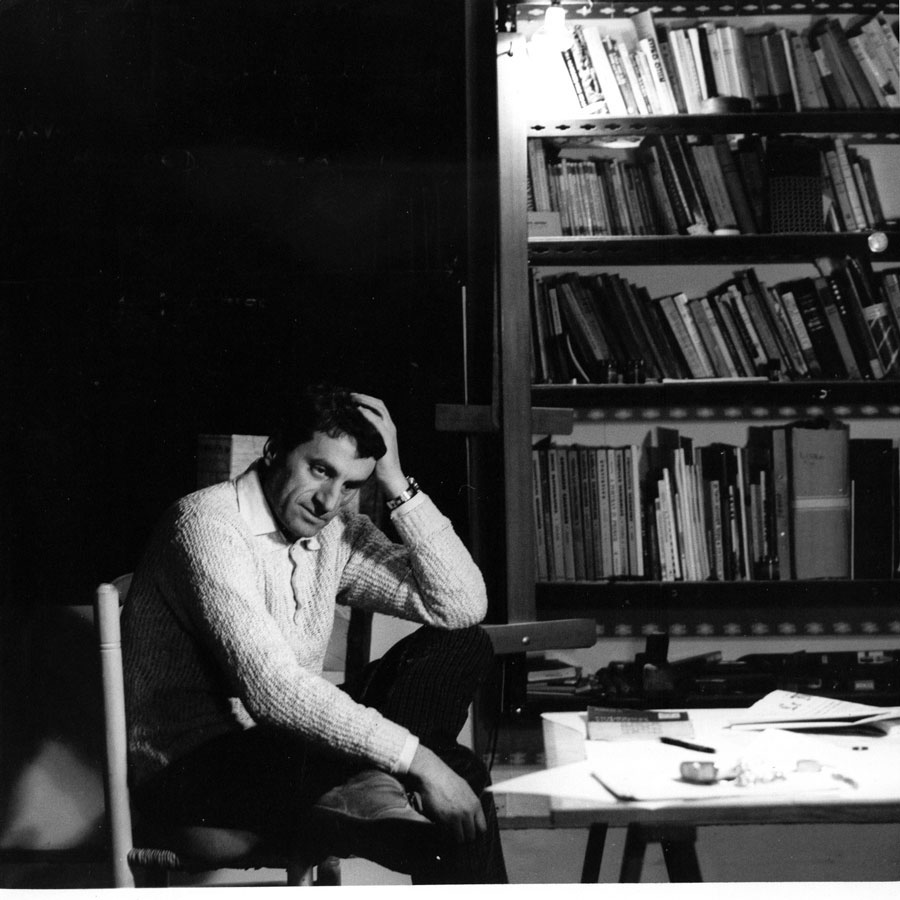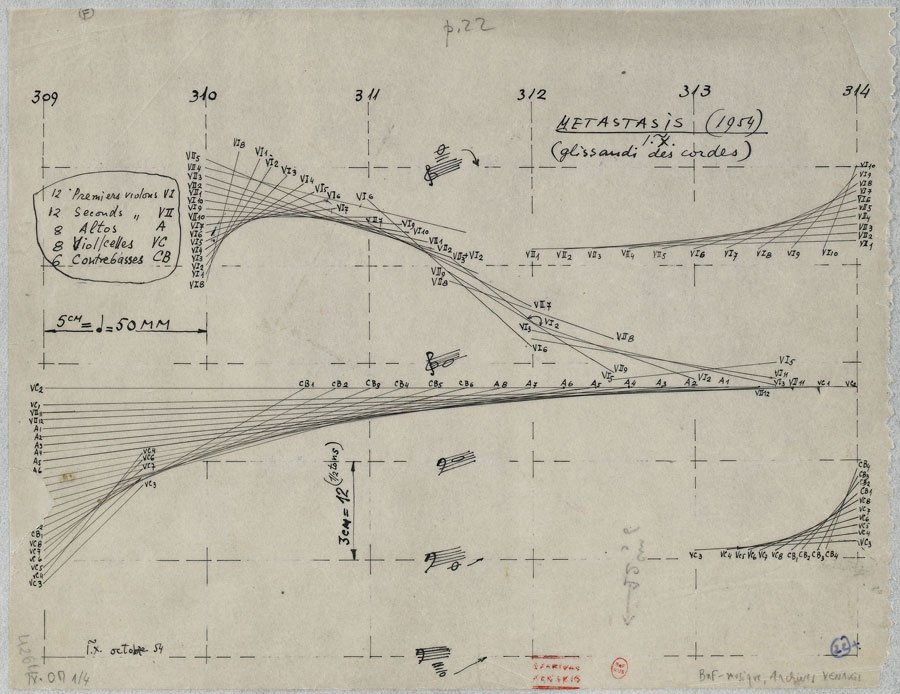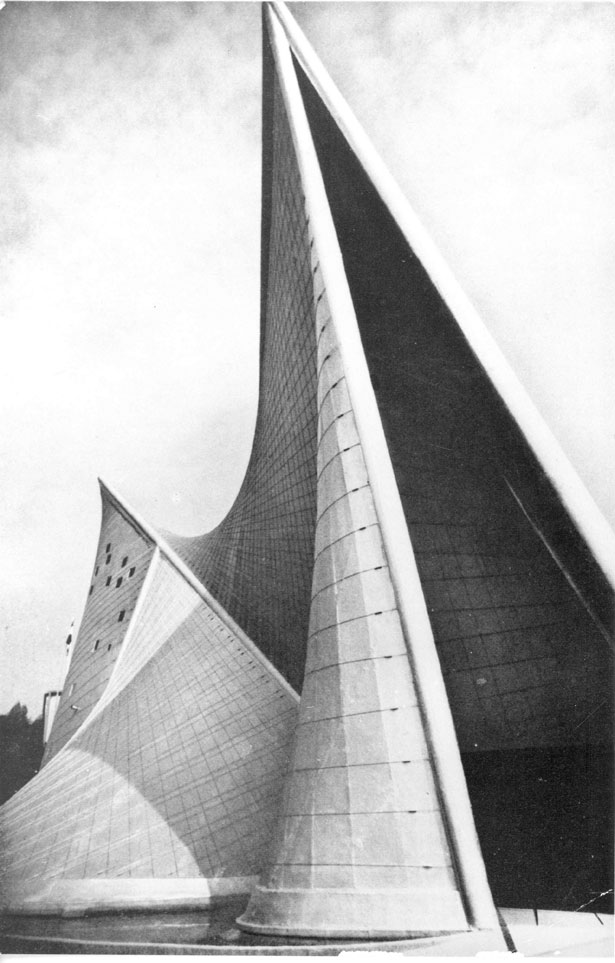Anticipating the public launch of the anthology Xenakis Matters at The Drawing Center on February 28, 2013, this first installment of The Bottom Line’s new column Retrospect revisits the exhibition Iannis Xenakis: Composer, Architect, Visionary, which was on view at The Drawing Center from January 15 to April 8, 2010.

Iannis Xenakis in his studio, Paris, c. early 1960s. Archival exhibition print, 35 x 35 inches. Photographed by Adelmann. Image courtesy of Françoise Xenakis.
Iannis Xenakis is remembered vividly as a major figure in avant-garde post-war music who pioneered, alongside contemporaries John Cage and Karlheinz Stockhauzen, modern compositional techniques. Xenakis’s omnivorous interests informed his work with sound, leading him to experiment with mathematics, stochastics, and emerging theories in physics to create new approaches to musical composition. His work in early computing also influenced the continuing development of electronic music and musical computing.
Examination of Xenakis’s work with sound leads inevitably to his work in architecture and engineering. Trained as an engineer, Xenakis worked as an architect under Le Corbusier, for whom he designed the Philips Pavilion for the Brussels World’s Fair in 1958. This unique building was, in part, a translation of Xenakis’s orchestral composition Metastaseis (1953–54) into three-dimensional space. Xenakis transformed the glissandi—movements between pitches—from Metastaseis into the curvilinear thrust of the innovative building. A similar spirit inspired his designs for site-specific Polytopes, multimedia installations with sonic components, and his later work on UPIC, an early computer designed to interpret drawn gestures as sound. These ventures informed his musical composition in turn: Xenakis sought new methods of scoring music to incorporate spatial relationships, intensities, and masses of sound.

Study for Metastaseis, 1954. Ink on paper, 9 ½ x 12 ½ inches. Image courtesy of Iannis Xenakis Archives, Bibliothèque nationale de France, Paris.

Lucien Hervé, Philips Pavilion, c. 1958. Archival exhibition print, 18 1/2 x 11 7/8 inches. Image courtesy of Fondation Le Corbusier.
Iannis Xenakis: Composer, Architect, Visionary, curated by Xenakis scholar Sharon Kanach and critic Carey Lovelace, explored the ways Xenakis’s multidisciplinary works shared a common genesis in drawing or “thinking through the hand.” The exhibition presented 80 works on paper—including hand drawn and computer-rendered scores, sketches, as well as architectural drawings and plans—alongside listening stations featuring recordings and video of Xenakis’s related graphics. An array of public programs accompanied the show on its international tour beginning at The Drawing Center and proceeding to The Canadian Center for Architecture and the Museum of Contemporary Art, Los Angeles.
In tribute to this landmark exhibition, The Drawing Center is pleased to celebrate the launch of Xenakis Matters: Contexts, Processes, Applications, an anthology of responses by thirty scholars, musicians, architects, musicologists, philosophers, and art historians to the work of Xenakis. The event will feature contributors Joel Chadabe, Sharon Kanach, David Lieberman, Carey Lovelace, Robert Rowe, and Ronald Squibbs, and a performance by Robert Black, double bass. Join us Thursday, February 28, 2013 at 6:30 PM.
Xenakis Matters was edited by Sharon Kanach and published by Pendragon Press.
–Daniel Peacock, Communications Intern
